Though some adults may shudder at the thought of buying toys for their children, the internet has certainly made toy shopping a whole lot easier than it used to be. Gone are the days of queuing up for fifteen hours outside your nearest large toy store just for a chance to purchase the latest Power Rangers action figure or the most popular new toy-based trend that’s making kids go crazy that week. You can now allow the internet to do the leg work for you, getting toys delivered straight to your door. We’ve gone one step further and taken the leg work out of deciding which are the best castle toys out there for children. You’ll find a decent selection of the very best castle toys we could find below, including offerings from Lego and Playmobil, and there’s even a Harry Potter set among the choices.
Category: General
A Medieval Empire Game Online
Good Game Empires is a free online medieval empire building and strategic war game. Set in the middle ages you have to build up your kingdom and castle from nothing to become a dominant empire capable of conquering other kingdoms.
UK Medieval Museums and Exhibitions
Learning about how we lived in the Middle Ages is made more interesting by looking around the various museum exhibitions available in 2015 in the UK. Many exhibitions display artefacts from the past that transport us back in time in a tangible way, while all visitors’ young and old will enjoy a great day out along the way!
Museum of London
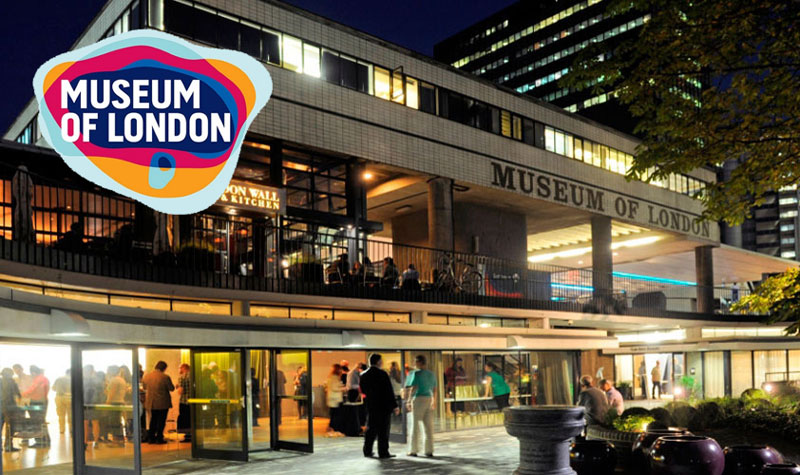
The Museum of London is open every day, while it is free to visit the museum too! This award winning museum houses a fabulous exhibition that tells the story of London from when it was a Roman city in the early 400’s through to the reign of Elizabeth I the great Tudor Queen. There are over thirteen hundred artefacts to view from toys and leatherwork through to jewellery and clothing. All the major events of the Middle Ages are showcased here by and make very interesting viewing.
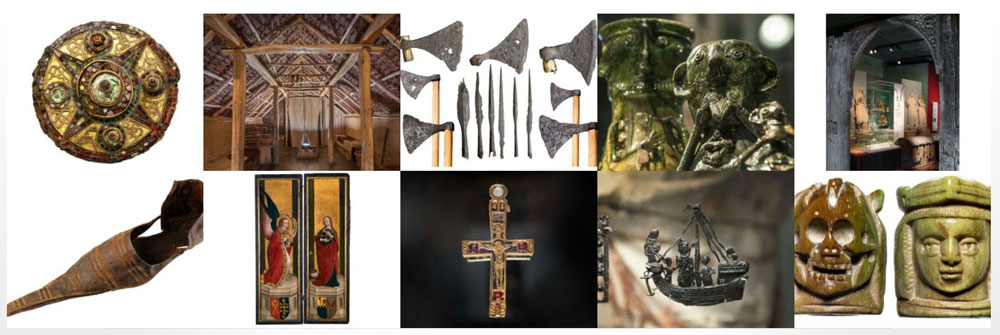
Medieval Artefacts at the Museum of London
Location
The museum is located on London Wall at the junction with Aldersgate Street. Bus numbers 4, 8, 25, 56, 100, 172, 242 and 521 pass the museum, while Barbican and St Pauls are the closest tube stations. Underground car parking is also available. Visit the Museum Website.
- Museum of London
- 150 London Wall
- London
- EC2Y 5HN
- Tele 020 7001 9844
Victoria and Albert Museum
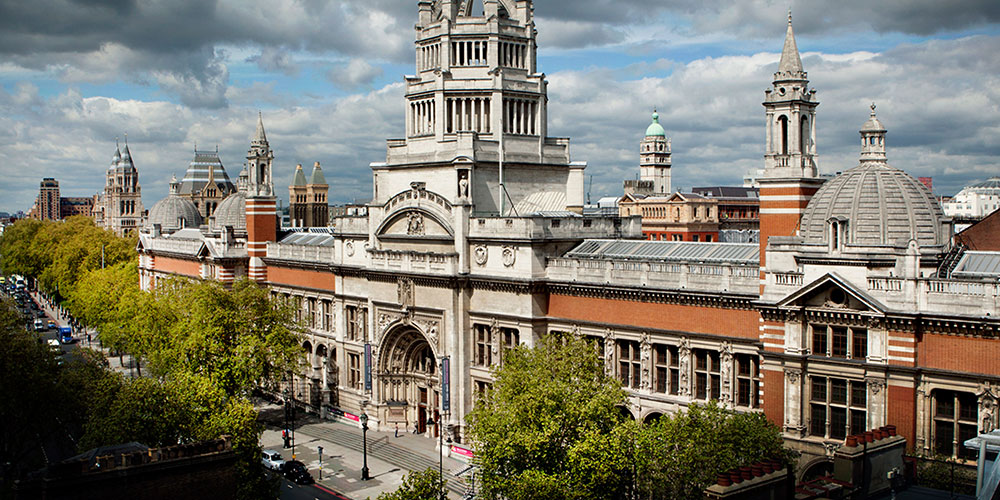
The Victoria and Albert Museum in London opens daily from 10am to 5.45pm. Admission is free, while the museum specialises in art and design through the ages. Their Medieval exhibition and gallery features such treasures as Gothic tapestries, while there is even a listening room where music from medieval times have a connection with the artefacts on display. Art and design in Medieval Europe features heavily with medieval jewellery also on display.
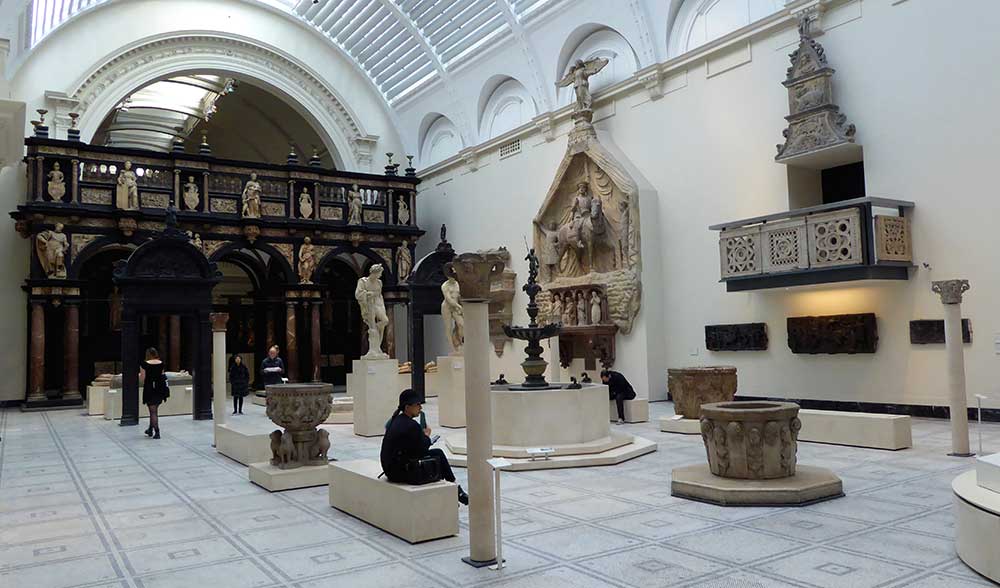
Location
The Victoria and Albert Museum is located in SW7 not far from Hyde Park. The Victoria and Albert Museum website offers a superb journey planner where you can work out which type of transport is best for your purposes.
- Victoria and Albert Museum
- Cromwell Road
- London
- SW7 2 RL
- Tele 020 7942 2000
The Yorkshire Museum

A superb exhibition regarding Medieval York is a highlight at the museum with medieval artefacts displayed amongst the backdrop of a medieval abbey. Many of the articles featured are from the time of King Henry VIII including objects that pilgrims would have brought to York Minster at the time. York is an amazing place that is steeped in Roman and Medieval history, while this exhibition shows us how people lived, worked and worshipped during the middle ages. The Museum also features a stained glass exhibition with displays dating from the 12th to the 20th centuries. Further exhibitions related to the Middle ages include Richard III Man and Myth.
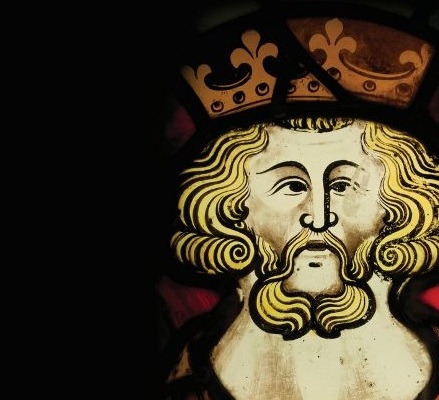
13th Century Stained Glass Window
Location
The Yorkshire Museum is located in central York in Museum Gardens. It is only a short walk from York Train Station, while there is plenty of pay and display parking throughout the city too.
- The Yorkshire Museum
- Museum Gardens
- York
- YO1 7FR
- Tele 01904 687 687
The Swansea Museum
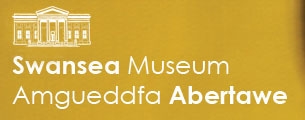
The Swansea Museum, the oldest museum in Wales, is located in the Maritime Quarter in Swansea and opens every day of the week except Mondays. Those who are interested in the Middle Ages can join a tour where they will walk the streets as medieval characters learning about how life was lived back then. Medieval witnesses will relate to visitors what they saw and did in the middle ages, while visitors will see just what Swansea was like in medieval times. Swansea Museum also displays many artefacts and caters for school groups, while the museum shop has many articles suitable to buy as a souvenir of your visit.
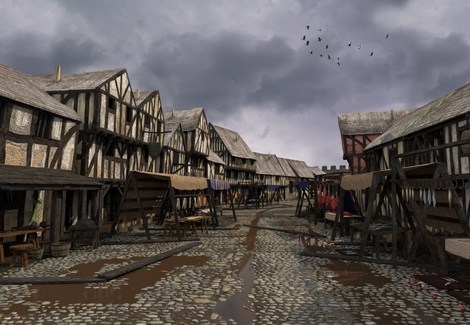
Location
The Maritime Quarter is around one mile from Swansea centre therefore has good transport links. For buses servicing the area please visit the First Bus website. The postcode for sat-nav purposes is SA1 1SN.
- The Swansea Museum
- Victoria Road
- The Maritime Quarter
- Swansea
- SA1 1SN
- Tele 01792 653763
National Museum of Scotland
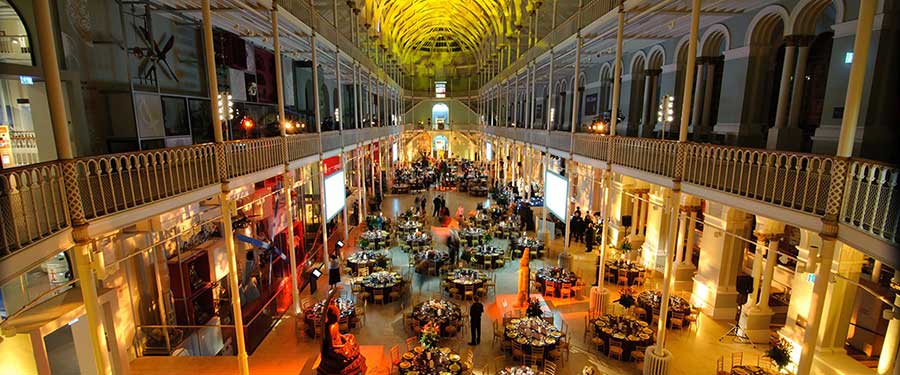
The National Museum of Scotland has a huge gallery that deals with Scottish history including that of the Middle Ages. Located on Chambers Street in Edinburgh visitors can see how life has changed over the centuries, while viewing amazing artefacts displayed at The Museum. The Kingdom of The Scots level features displays dealing with the years 1100 through to 1700 when Scotland and England were finally joined to become the United Kingdom. Learn about William Wallace and Mary Queen of Scots, while a replica of the tomb of Mary Queen of Scots can also be viewed.
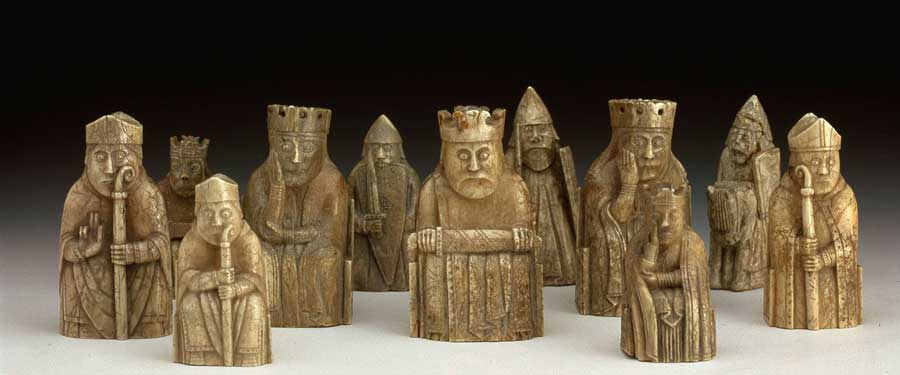
Replica Tomb of Mary Queen of Scots
Location
- National Museum of Scotland
- Chambers Street
- Edinburgh
- EH1 1JF
- Tele 0300 123 6789
Bede’s World
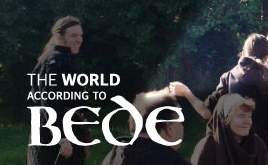
The World According to Bede is located in Jarrow Tyne and Wear. The museum tells us of Bede himself relating his life and times in the 7th century in detail. Bede was an English monk who was a historian and scientist in the Middle ages. The skull of Bede is one of the permanent exhibits at the museum featuring a cast of the actual skull of the venerable man himself. The story of how the cast was made from the skull is presented along with early medieval details about the cult surrounding the man. Further exhibitions and events here include
- Prints from Indigenous Australia
- Handwritten, a collection of calligraphy by Northumbrian scribes
- Three lectures, the Saturday lecture, the Jarrow lecture and the Wearmouth lecture
Educational visits are welcome as are groups and individuals.
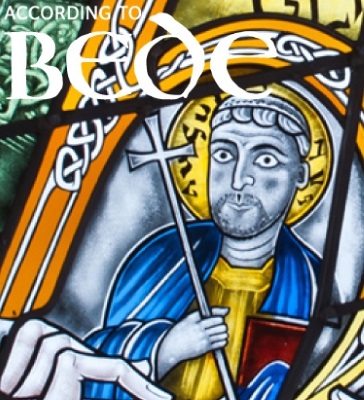
Location
Jarrow is located in the Tyne and Wear district with Bede’s World sited 2 minutes from the A19 Tyne Tunnel. Both Bede and Jarrow metro stations are a twenty minute walk from The Museum, while the number 27 bus stops close by.
- Bede’s World
- Church Bank
- Jarrow
- Tyne and Wear
- NE32 3DY
- Tele 0191 489 2106
Medieval Wales History: Life in the Middle Ages
The Middle Ages in Wales was a time of political and social change, while its tribal language and culture prevailed throughout the era. Here we take a look at how the Welsh lived in the Middle Ages and how the indigenous people of the region made it the proud area of Britain it remains today.
Early Middle Ages
The Welsh people once lived across the length and breadth of Britain as they were descendants of the original Britons who settled here. The separate kingdoms within Wales, namely, Brycheiniog, Powys, Deheubarth, Gwent and Morgannwg unified by the Middle Ages into Gwynedd. The Norman Conquest largely affected England and did not affect Wales for many years as suppression was more important at the time but William the Conqueror did state that Wales would have to be invaded eventually. The Welsh did not capitulate easily and fighting went on for many centuries.
Norman Attacks
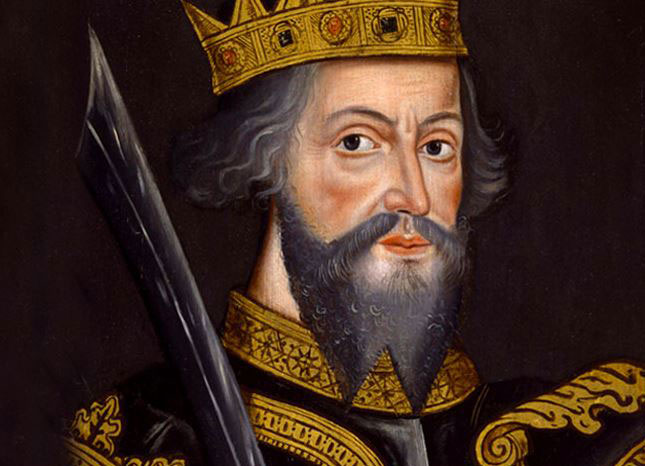
William the Conqueror established earldoms in Chester, Hereford and Shrewsbury with rulers who were noted for their aggression. These three earls played a major role in the insurgencies over the Welsh border with the Earl of Shrewsbury building a castle at Montgomery along with taking over much of the borderlands, the Earl of Hereford overran the Kingdom of Gwent and the Earl of Chester invaded Gwent. Following William the Conquerors death in 1087 the invasion of Wales speeded up enormously Rhys ap Tewdwr who William had recognised as a power was killed and many more areas of the country capitulated to the invaders.
When William II came to the throne Norman attacks on Wales increased with the Welsh resisting and in many areas keeping their land. In the areas where English lords had taken power they built towns one of which was Cardiff. These towns were small by today’s comparison having around two to three hundred inhabitants, while The Normans also built monasteries around this time. In 1255 another Welshman claimed himself king. Llewellyn declared himself King of Gwynedd with Powys, Glamorgan and Deheubarth declaring loyalty to the king.
King Henry III of England signed the Treaty of Montgomery with Llewelyn making him Prince of Wales although Llewelyn did swear allegiance to Henry. Once Edward I claimed the throne he was determined to conquer Wales and did so by 1283 when he imposed English Law on the Welsh. Rebellions ensued, while eventually Edward declared his son Prince of Wales in 1301.
Medieval Castles
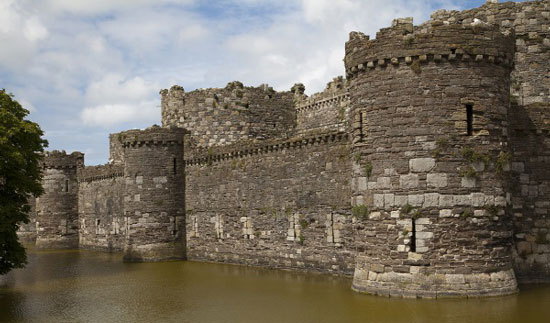
Many castles were built in Wales during the Middle Ages with Beaumaris Castle on Anglesey being the final and largest castle built by Edward I of England. Caernarfon Castle was also rebuilt by Edward I in 1283 and is acknowledged as one of Europe’s greatest Medieval fortresses. This castle was built in response to a rebellion that was fronted by Llywelyn ap Gruffydd the then Prince of Wales. The site of this castle was strategic in that Edward could control traffic that used the Menai Straits. Caernarfon Castle began life as Roman fortress, then a motte and bailey Norman Castle.
The Black Death
Wales was hit by the Black Death or the Plague as it was commonly referred to in 1348. Up to one third of the population of Wales perished from the Plague.
The Dangers of Medieval Life
Living in Wales in medieval times was fraught with danger as it was in most places throughout Britain. Here are some of the things people living in the middle ages would have to watch out for.
Violence in Society
Violence and violent behaviour was all around in the middle ages and it didn’t matter whether you were of noble birth or lowly birth you were just as likely to succumb to it. Fighting in the street and in taverns was common place, while rebellions against the nobles were also a frequent occurrence. Murder, rape and assault were common, while family feuds would often end violently with domestic violence happening more often than not.
Early Death
People who lived in the middle ages did not expect to live into old age with death during childbirth common for both mother and child. Infant mortality was very high with some forty percent of children dying before the age of six. Smallpox, whooping cough, measles and flu all took their toll. Those of noble birth fared better than peasants but there were some things that status could not prevent. Plague, TB, sweating sickness and warfare crossed the divides, while peasants were more likely to die from malnutrition, starvation and famine. Those who managed to survive childhood sometimes were fortunate enough to live until their sixties but this was more the exception than the rule.
Travelling
Travelling during the middle ages was fraught with danger. Travelling alone was especially dangerous as you could be attacked or set upon and robbed, while travelling long distances had the added threat of starvation or freezing to death outdoors if no shelter could be found. Travellers often drowned when crossing rivers or sometimes boats would sink in bad weather.
Starvation
Starvation or famine was another way in which people of the middle ages would meet their demise. Peasants were particularly affected when harvests did not come in and the supply of food became minimal. People would suffer from malnutrition which had a knock on effect as they would then catch diseases more easily. The Great Famine of the early 1400’s claimed many lives with as many as 10% of lives lost.
Unpopular Beliefs
Those who believed in anything that was not considered the norm would place themselves in danger during the middle ages. Heresy was punishable by death and many people were persecuted as a result including Jews and Muslims as Christianity was considered the one and only true faith. Even within Christianity people could be considered heretics if they questioned the Christian faith.
Medieval Welsh Village
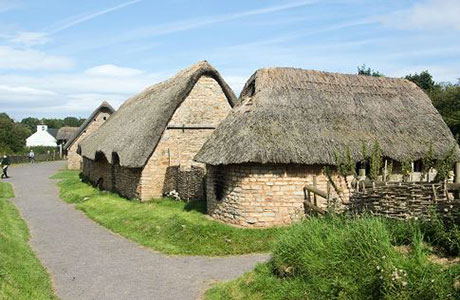
Those who would like to visit a medieval Welsh village have the opportunity as Comeston Medieval Village in Penarth dating from around 1350 is a wonderful tourist attraction. The village comprises of excavated buildings that were lovingly reconstructed accurately back in the 1980’s. Please see the Vale of Glamorgan Council website for more information.
Medieval England 12th Century and More: Life in the Middle Ages
The middle age period covers from around the year 400 through to 1485 and here we take a look at all the notable periods including the dark ages and 12th Century England.
The full medieval period is divided into three categories known as the early middle ages, the high middle ages and the late middle ages. Great Britain as it was known comprised of England, Scotland and Wales as Ireland was a separate country during this period. Here we take a look at England during the middle ages, how we lived, worked and what life was like in general.
Anglo Saxon England
The Anglo-Saxon period covers approximately four hundred years from the fifth century through to the ninth. Many things changed and evolved throughout this period including religion with barbarians who invaded first through to Christians who came to preach the bible influencing the future of the country. The first settlers were from Germany and settled in England following the fall of the Roman Empire.
The German settlers replaced many of the Roman buildings with wooden structures of their own and also spoke their own unique language that was the front runner to spoken English today. As far as religion goes once St Augustin came to England most of the country converted to Christianity. The early settlers were very tribal and split into more local groups but by the ninth century there were just four kingdoms namely Wessex, East Anglia, Mercia and Northumbria.
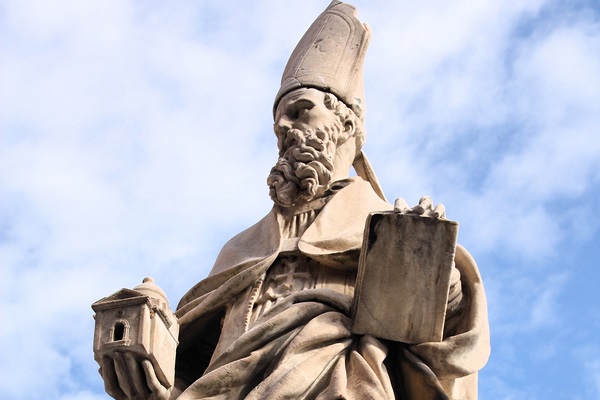
St Augustine
Wessex was the kingdom that survived following the Viking invasions. Anglo-Saxon rule ended in 1066 following the death of Edward the Confessor. Edward nominated Harold to take over as king as Edward had no heir but Harold was defeated by the Normans at the Battle of Hastings bringing the Anglo-Saxon era to a close.
Anglo-Saxon Homes
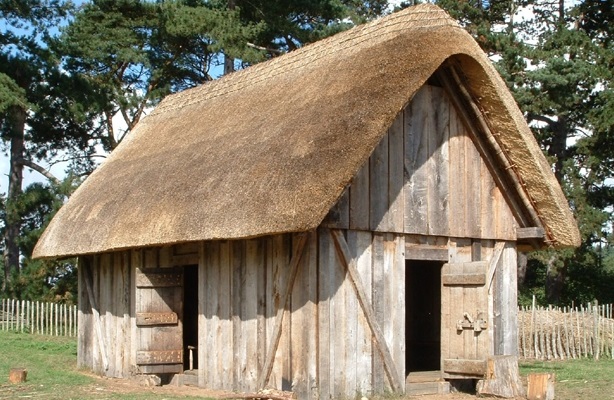
In Anglo-Saxon times everyone of every generation lived in the one house from the smallest baby through to the oldest grandparent or even great grandparents if they lived that long. A typical Anglo-Saxon Home was a wooden construction with a thatched roof being one of a number of dwellings that were built close together surrounding a central hall. These houses were small by today’s comparison comprising of one room only with a fire and a hearth that heated the home and was used for cooking and light. Anglo-Saxons hung a cooking pot over the fire suspended by a chain to cook their food.
Anglo-Saxon Work
The main source of work for the Anglo-Saxon was farming which all the family played a part in. The men folk did the heavy work such as the chopping down and clearing of trees so the land could be cultivated to grow crops and keep animals. Oxen were used to pull the ploughs that tilled the fields, while children would herd the cows and sheep with dogs. Other occupations the Anglo-Saxons worked at included
- Carpenters who made furniture, wheels, carts and wooden bowls
- Blacksmiths who made swords, knives, tools
- Potters created pottery
- Cobblers who made shoes and leather goods
- Jewellers who made items for the rich
What Did the Anglo-Saxons Invent/Introduce?
The Anglo-Saxons may not have strictly invented the following items but they did introduce them to England changing the way we lived forever. The plough transformed their lives as it made tilling the fields and planting much easier. They also introduced the horse collar meaning horses could be used instead of oxen to pull the ploughs bringing speed and efficiency to the process. The stirrup for riding was also credited to the Anglo-Saxons as was the water mill.
Anglo-Norman England
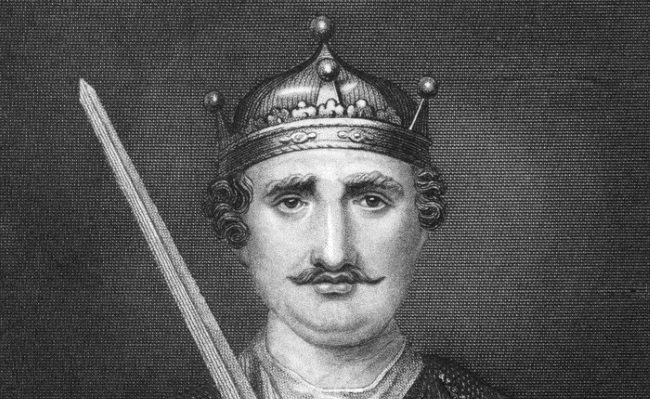
William the Conqueror
Anglo-Norman England began around 1066 when the Norman invaders defeated Harold at the Battle of Hastings. William the Conqueror of Normandy became William I and established the Norman dynasty, while they ruled England until the mid-eleven hundreds. The invasion and subsequent conquering of England by William was no mean feat, while England was considered as the perfect example of how life should be led and was much admired throughout Europe.
The first thing the Normans did was to carry out a census of the population, this document became known as the Doomsday Book. They imposed a feudal system on the country and built some magnificent castles. The first Norman castle constructed of stone was built in Wales. The Normans invaded Wales building castles as they went and quickly subjugated the population. A typical Norman built castle at that time was Rochester Castle in Suffolk built in the eleventh century. Further buildings and dates worthy of note involving the Normans are
- The building of Canterbury Cathedral
- The Tower of London
- The Doomsday Book
- Oxford University is founded
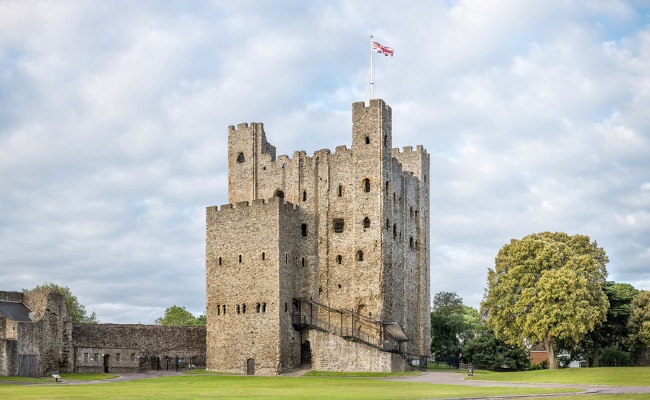
Rochester Castle
The Feudal System
Prior to Williams’s invasion we see Anglo-Saxon people enjoying their freedom to work at their chosen trades or to farm the land. Following the invasion a feudal system was forced upon the people making the once landowners and farmers of England now peasant farmers who had to swear allegiance to whoever was above them. The system was as follows
- A quarter of the land was taken by William for himself
- A quarter of the land went to the church in Rome
- The other half was divided between a dozen people who were loyal to William
- These people were tenants in chiefs who were also responsible for raising an army if required
- Knights were put in charge by the tenants in chiefs
- Finally came the peasant farmers who swore allegiance to the knights
Ultimately, everyone in the land, no matter how high their station or lowly their places in society were became accountable to the King.
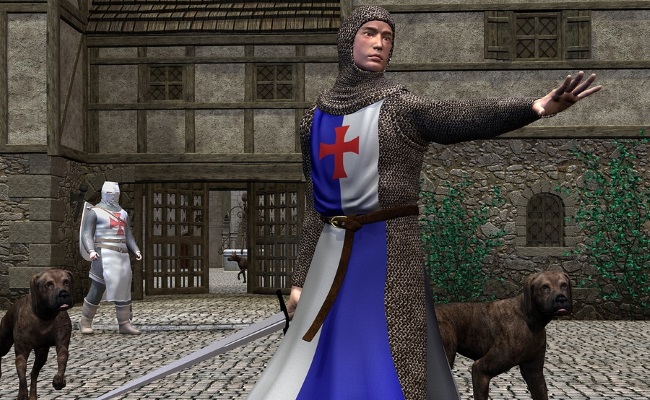
A Norman Knight
What Did the Normans Eat?
The Normans loved spicy food and would flavour their meals with nutmeg, caraway seeds, ginger, cardamom and pepper. They celebrated Christmas and held amazing feasts although these were most likely held by the rich and powerful. Norman people were allotted food according to their station in life, were seated according to their hierarchy and also used crockery and utensils according to their station too.
Noble people ate pheasants, peacocks, wild boar, jellies and custards, while peasants ate salted or pickled food such as pickled herrings, bacon, vegetable soups and bread. Nobles drank wine, while peasants drank ale and some diners would eat from stale bread rather than using a plate. Entertainment was provided in the homes of the rich with minstrels and acrobats keeping the guests enthralled.
The Late Middle Ages
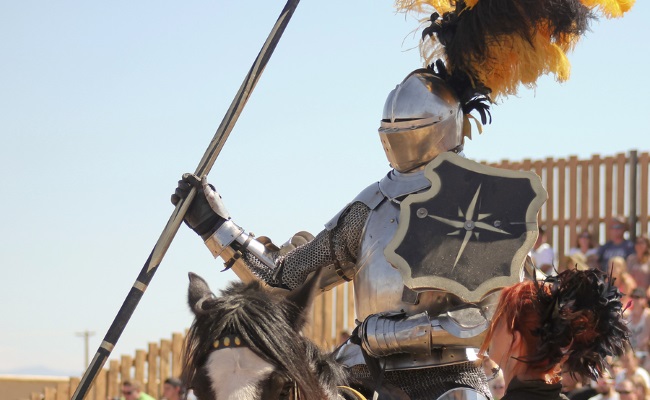
The Late or High Middle Ages in England covered from the eleventh through to the end of the thirteenth centuries and was a time of great change and upheaval. From social changes, rebellion and the Black Death through to the Renaissance that had such an influence on Europe and England the Middle Ages always holds a fascination for us. We tend to look at it as a romantic time with knights, chivalry, banquets and majestic castles but in reality for the masses life was far from easy.
Civil War and King Stephens Reign
The death of Henry I in 1135 saw William the Conquerors grandson Stephen seize the throne plunging the country into a civil war that was to last for twenty years! Everyone suffered greatly whether they were of noble birth or from the peasant’s ranks although the ordinary folk were greatly oppressed at this time with some even enslaved. Torture was common place in order to extort information about goods or gold and possessions, while many starved to death. The war ended when Stephen died and Henry II came to the throne.
Henry II did bring a modicum of peace to England and it was under his reign that Thomas a Beckett became Archbishop of Canterbury. Henry thought as the two were friends that he would have power over the church but Thomas had different ideas and the two became firm enemies culminating in Henry having Thomas murdered in Canterbury Cathedral.
Slaves Serfs and Lords
In 12th century England a man’s status was more complicated than that of his counterparts in the rest of Europe. English serfs could be tied to the land and answerable to the lord. Some were free men paying rent, while some were half free and owed a service to their master as well as paying rent. However in England a free man’s status could change to that of a serf if he couldn’t pay his taxes, while a serf could be raised to free man status.
Serfs could also achieve freedom by escaping and living in a borough for a whole year plus one day evading capture, while their wife and family also became free too. Once granted freedom a man had to take his turn standing guard over the borough and remember to pay his taxes.
The Rule of King John
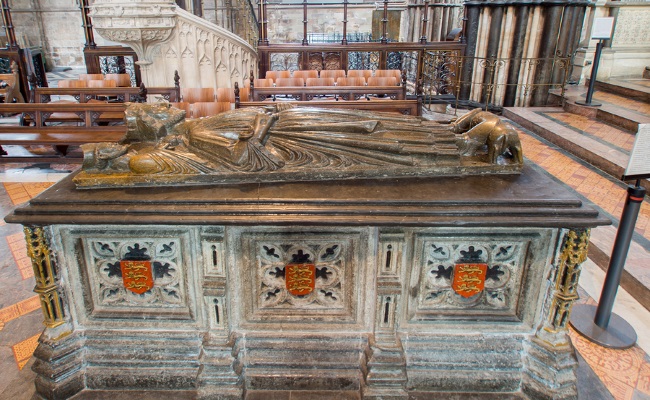
King John’s Tomb
King John was not a popular king and was among the worst oppressors of the people in English history. The king was violent, a tyrant, greedy and an altogether horrible person. He ruled by fear imposing huge taxes on his subjects using the money to pay for mercenary soldiers who would do his bidding. With support of the barons King John ran rough shod over everyone. John even argued with the pope and was excommunicated because of this. Following many years of suppression the barons revolted and demanded that King John acknowledge the Charter of Liberties of Henry I the charter was predecessor to Magna Carta. King John was forced to sign Magna Carta one of the most important documents in history, while Magna Carta is the charter our laws and justices still adhere to today.
The Establishment of Parliament
Henry III was against the people having any say in how the kingdom was ruled he believed that he should be the one divine ruler. Simon de Montfort Earl of Leicester was powerful and took Henry hostage demanding he give in to the earls demands. Fifty years after Magna Carta on January 20th 1265 Simon de Montfort called elected representatives from every county and town to gather together to speak on behalf of the people they represented. This was the first meeting of parliament and the representatives even had their expenses paid just like MPs do today. By 1298 the powers of taxation were also taken over by parliament.
The Plague
The Plague or the Black death was one of the most virulent and devastating pandemics in English history. It is thought over two hundred million people died throughout Europe with at least 1.5 million victims hailing from England. The plague lasted from 1348 to 1350 and indeed was to strike again six times by the year 1400. The plague is thought to have originated in Asia and affected the peasants of England dreadfully culminating in the peasant’s revolt of 1381.
We now know that the plague was an airborne disease and was not passed on by fleas and rats, while once you contracted the plague you would be dead in a matter of days rather than weeks. The problem for the poor was that they all lived so close together in very confined spaces therefore it was virtually impossible not to be affected. Rotting bodies littered the streets, while medical science was unable to offer any relief of symptoms never mind a cure.
Peasants were starving due to there being no-one left to plough the fields or grow any food stuffs with whole villages of people being eliminated. Peasant labour was in high demand due to the shortage of workers and peasants began to move around the towns and cities gaining better pay as their services were needed. The government tried to stop this movement making the peasants furious resulting in the peasants revolt of 1381.
A Childs Life
Children in the middle ages led very different lives to children today. Noble children were looked after by nurses or servants and saw very little of their parents. Boys would learn how to be a page from the age of around seven, while girls would learn how to run a household. Boys also learned how to fight and would go on to become a squire or a knight.
Children also married very young in the middle ages with girls as young as twelve married off in an arranged union made by their parents. Poor children started working for their family around the age of seven and were far less privileged than noble children although usually peasant children could select their own marriage partner.
Life Expectancy
We tend to think that life expectancy was really short in the middle ages and while to some extent this is true it was not always the case. Many of course died in childhood but many did reach the age of forty. If you could survive your childhood and teenage years you could by and large expect to live maybe to your fifties with many reaching their sixties and a minority reaching the ripe old of age of seventy or eighty.
The Houses of Lancaster and York: The War of the Roses
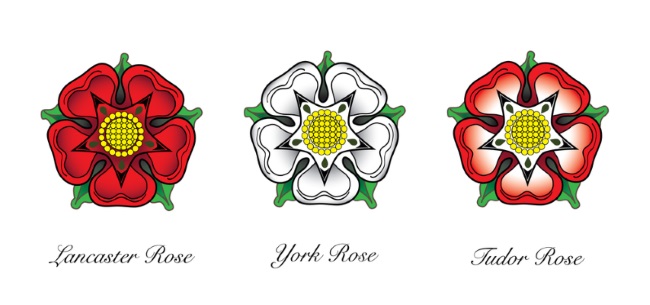
The Plantagenet monarchs began with Henry II followed by Richard I or Lionheart as he was known. King John I was next followed by Henry III, Edward I, Edward II, Edward III and Richard II. Next came Henry IV, Henry V and Henry VI who became king at the tender age of nine months.
The War or the Roses was a series of battles fought between the houses of Lancaster (red rose) and York (white rose) between 1455 and 1485. The conflict began as both sides of this family were descendants of Edward III so believed that they were the rightful heirs to the throne.
Richard III who is one of the most famous kings in English history represented the house of York and was immortalised in history at the Battle of Bosworth Field where he died in battle fighting King Henry VII the first Tudor king. Henry VII became king after Richards’s death and joined the house of Lancaster with York when he married Elizabeth of York who subsequently gave birth to Henry VIII. The Tudor rose was then designed bringing together the white and red roses of both sides.
Notable Dates of the Middle Ages in England
- Battle of Hastings 1066
- The Doomsday Book 1086
- Death of William the Conqueror 1087
- The Civil War Ends 1154
- King John Seals Magna Carta 1215
- King Edward Expels Jews from England 1290
- The Hundred Years War begins between England and France 1337
- The Black Death comes
- The Peasants Revolt 1381
- The Battle of Agincourt 1415
- Hundred Years war Ends 1453
- Reign of Richard III 1483 to 1485
- Henry VII defeats Richard III at Bosworth Field 1485
Medieval Scotland History: Life in the Middle Ages
We imagine life in medieval Scotland to be the picture painted in Scottish ballads with kings, queens, knights and wonderful castles at the forefront of life back then. There may have been all these things but the reality of life during the middle ages for the Scots was very different. Let’s take a look at how the Scots lived and dispel the fairy tale!
Early Middle Ages
During the fifth century Scotland was made up of four separate kingdoms namely the Picts, the Scots of Dal Riata, the Britons of Strathclyde and the Kingdom of Bernicia. By the ninth century following the invasion of the Vikings the Scots and the Picts joined together to make the Kingdom of Alba. By the twelfth century Scottish rulers combined French culture with their own as was their preference at the time. Scotland established its independence with characters such as William Wallace (who is still much admired today) and Robert the Bruce fighting for the right to self-govern.
Scottish Medieval Castles
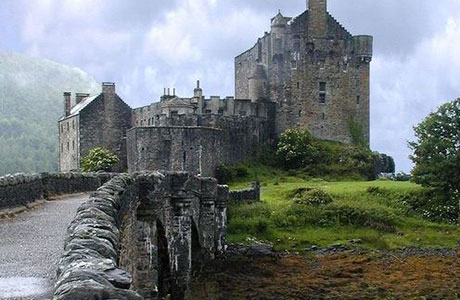
Scotland’s castles began as defensive timber structures with wooden palisades evolving into magnificent stone fortresses as the middle ages progressed. These stone built castles were comfortable inside and had huge kitchens where delicious food was prepared to be served at lavish banquets. French wine and ale were the drinks of the day, while boar, venison, deer and rabbit were popular meats as were herbs and spices that seasoned the dishes. Singers and musicians would entertain the guests.
Ladies of the castle were pampered by their ladies in waiting and would spend hours embroidering linens or weaving, while the men folk went out hunting and hawking. The castle walls were decorated with beautiful hanging tapestries, while the only light when the hours of darkness descended would have been candles. When it came to visiting the bathroom people used garderobes which in essence were holes above a cesspit. Castles although elaborate and far more luxurious than where the peasants lived were places full of obnoxious smells.
The Workers
So, what type of work would your average medieval Scot undertake? There were many different jobs with tasks such as baking, butchering or spinning being popular jobs that were necessary to everyday life. Other occupations included singers, minstrels or clerical people, while trades if you had one, were a good way of making a living. The apothecary made and sold medicine, barbers believe it or not cut hair but also practiced bloodletting and would sometimes perform operations!
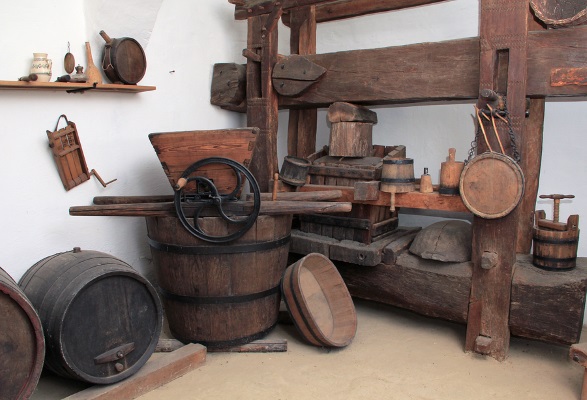
Further trades included
- Shoemakers
- Swine herds
- Fletcher or arrow maker
- Coopers who made barrels
- Hatters
Those who were skilled trained as apprentices in order to win the right to practise their skills.
Scottish Food in the Middle Ages
The Rich
Food eaten in the middle ages differed greatly from the types of food we deem acceptable to eat now. Noble Scots back then thought nothing of eating swan for instance a beautiful bird that is now protected. Animals such as seals, porpoises, lampreys and even peacocks would be caught and served. In fact birds were a huge part of the staple diet with geese, pheasants and many wild birds favoured. The Scots also ate plenty of fish as the church forbade the eating of meat on Wednesdays, Fridays and Saturdays in the middle ages. Popular fish were herrings, salmon, bream, pike and eels.
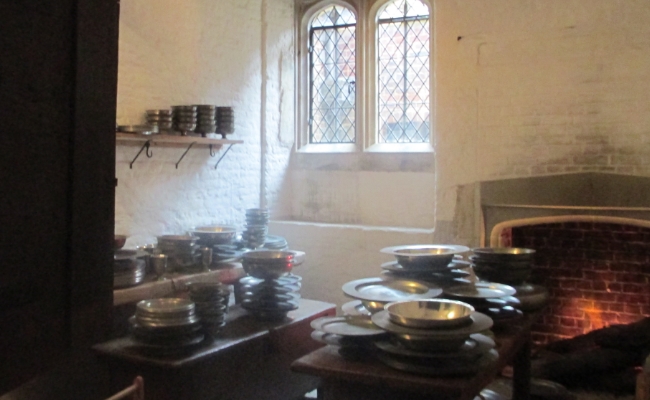
Medieval Noble Kitchen
Peasants
Food that peasants ate was quite different to the food the rich ate as you would expect. Peasants would eat more or less the same sort of food on a daily basis, twice a day. Usually their meals would be made from home grown produce made into oat bread, porridge and oat cakes known as bannocks. Pottage was also a popular meal and was made from vegetables into a type of soup or stew. If they were lucky they may have mutton as an accompaniment.
Those who kept cows and chickens would have eggs and milk to eat, while everyone drank a weak type of beer as very often the water was not safe to drink as it was contaminated. People relied on the harvest coming in and if it did not very often people would die from starvation. Many peasants turned poacher during hard times and would steal the landowner’s fish during the hours of darkness in order to feed their families. Food was cooked over a central fire in the house. As peasant’s houses consisted of only one room the central fire served as cooker, heating and light.
Medieval Scottish Clothing
Depending on your station in life, what you wore was a given rule, in that peasants wore simple clothing, while the rich and regal population would dress in more colourful elegant clothing. Highland Scots stuck to their Gaelic roots with both men and women wearing a shirt or tunic known as a leine with the men wearing a mid-length version compared to the ladies full length garment. Those with a little more income would wear trousers or Braies, while poorer peasants would coat their leine in grease to waterproof them. Some Scots also wore woollen hose that were a type of footless tight.
Contrary to popular belief the kilt did not come into being until centuries later, while neither did the Scottish Bonnet. Medieval Scots wore a kind of kilt known as a belted plaid that was similar to a wraparound cloak and was an outer garment used to keep them warm. These belted plaids were not worn in battle as warriors would charge into battle simply wearing their leines. Men wore hats or hoods at this time, while shoes were made of leather and offered little protection against the elements.
Scottish Sports and Pastimes in the Middle Ages
Hawking and Hunting
One of the most popular of pastimes in Scotland at this time was hunting and hawking. Hunting and Hawking was mainly done by the nobles with hunting played out on horseback. The nobles would use spears and longbows, while in the later middle ages crossbows were introduced. Animals hunted included deer, hare, rabbit, wolves and wild boar and special hunt attendants would collect the dead and injured prey.
In contrast hawking was done on foot without weapons as large birds of prey were used to catch small animals and birds. Specialist falconers were responsible for training the birds and were held in high regard, while a well-trained falcon was a prized possession of the owner.
Medieval Sports
People who lived in medieval Scotland enjoyed a number of sports that would take place in their own towns and villages. Popular events included
- Wrestling
- Pitching Quoits
- Bowling
- Fighting with Cudgels or Clubs
- Archery
- A primitive type of football
- Badminton played with balls and paddles
- Ice skating performed with cows shinbones for blades tied to their feet
Medieval Beliefs in Scotland
Religion and what people believed in the middle ages was extremely important to them all over Europe and none more so than in Medieval Scotland. Those who were the most dedicated would give up everything to take holy vows to become a monk or a nun, while others would work in monasteries in a lay capacity. When it came to places of worship Medieval Scotland was littered with churches, monasteries, cathedrals, shrines, holy wells and burial grounds.
Ordinary folk would go on pilgrimages to holy shrines in order to receive special graces from God. Their greatest fear was that of the devil and hell therefore prayer and sacrifice became a mainstay of their lives. Nobles would sponsor pilgrimages, while pilgrims would sow lead pilgrim badges into their clothing in order to gain protection from a saint. Throughout the year there were many festivals and religious feasts celebrating the lives of saints with the patron saint of Scotland being Saint Andrew who was a Christian apostle.
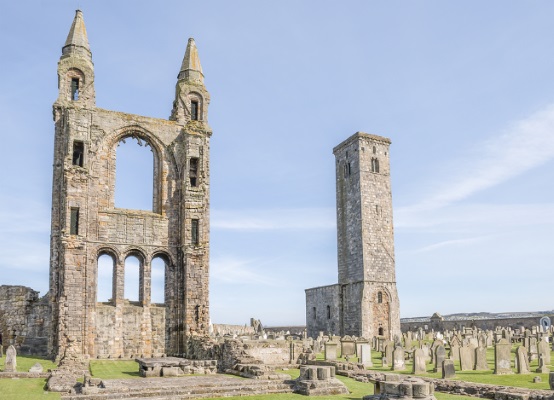
Inside churches bible stories were depicted in wall paintings and embroideries as well as in stone carvings. Medieval plays were also acted out regularly and were very popular with the masses. As Christianity took over from pagan religions pagan sites were transformed into Christian sites, while wealthy folk made sure of their place reserved in heaven by donating plenty of money to the church!
The Black Death
The Black Death first took hold in England and the Scots were very smug about it saying it was the revenge of God upon the English. This of course was not the case and soon the disease that knew no boundaries arrived in Scotland just before the Scots were about to launch an invasion of England. They thought to take advantage of England’s plight but by 1350 the Black Death took hold.
Scottish society was badly hit including ordinary people and peasants alike. Just like in England the peasants who survived the plague began to demand higher wages as labour was scarce. Churches and cathedrals put on plays called the dance of death. These plays were put on to remind everyone rich and poor that their final judgement would be by god whatever their station. The Black Death claimed thousands of Scottish lives exactly as it had done all over the European continent.
The Border Reivers 1300 to 1600
The Border Reivers Gangs hailed from within a mile of the English/Scottish Borders between the 1300’s and 1600’s and raided the land around the borders constantly within this time period. The Reivers gangs were organised according to their families and clans with feuding and raiding common place. The gangs would steal sheep, cattle and horses. Prior to 1513 thousands of raids along with armies of thousands of men had been killed in long battles along the borders of England and Scotland. These skirmishes and wars went on for hundreds of years and meant the border folk lived among violence for years.
The Border Reivers gangs were known for their violence but the emergence of poetry, ballads and how the people became masters in horse riding and its related pastimes were also associated with the time. The March Wardens were appointed officials from both sides in the conflict who tried to bring some sort of law and order to the area. Churches in the area were fortified so that when people required sanctuary they would have somewhere safe to take refuge.
Medieval Scottish Monarchs
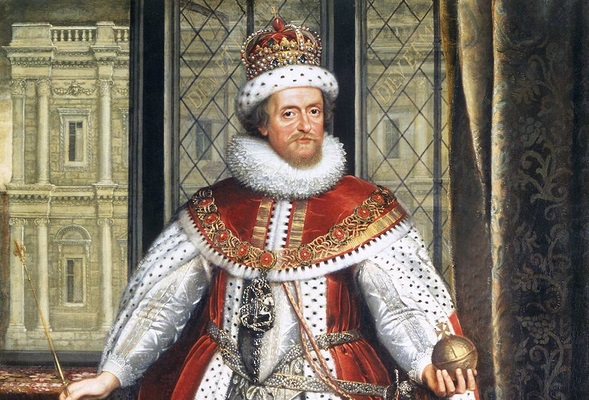
The kings and queens of medieval Scotland could not sleep easy in their beds as not only were outside forces a threat but there were threats from within specifically from Scottish nobles. The eldest son of King Robert III died in suspicious circumstances at Falkland Palace in 1399. King Robert sent his remaining son James to France but his ship was attacked and James was taken captive and remained so in England for eighteen years.
James eventually married Joan Beaufort the cousin of King Henry VI of England and returned to Scotland in 1424. This marriage was unusually for the time a love match! James became James I of Scotland and began the process of reclaiming Scotland as his. As there were those who also thought the throne was their right (Earl of Athol) plots and counter plots ensued resulting in the murder of James I on February 21st 1437 at Blackfriars Monastery in Perth at the hand of Sir Robert Graham. Queen Joan who survived the attack vowed to bring the perpetrators to justice and had them hunted down. Sir Robert Graham and The Earl of Athol were tortured without mercy and executed.